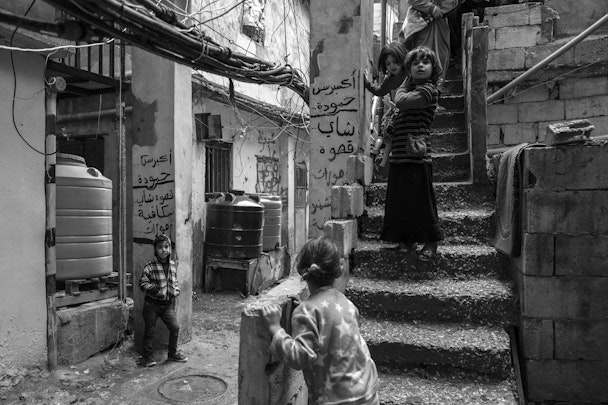Amnesty International’s head of comms on why interactive social campaigns could help find a solution to the refugee crisis
The viral video has long been hailed the holy grail of charity marketing but Amnesty International is taking a less risk adverse approach to social media to make sure its campaigns are driving action as well as awareness.

Amnesty International’s head of comms on why interactive social campaigns could help find a solution to the refugee crisis / Amnesty International
Amnesty’s director of communications Osama Saeed Bhutta , who joined after departing Al Jazeera last year, tells The Drum: "it’s a competitive field out there on people’s timelines,” adding that as such the brand was going to have to do things in a “very different way.”
The organisation last week unveiled an interactive Twitter campaign dubbed #TakeAction which connected outraged social media users with real refugees from Lebanon and Kenya.
Looking to build on the discourse around Donald Trump’s controversial executive order temporarily banning refugees and travelers from seven majority-Muslim countries, the charity filmed refugees’ real-time responses to tweets from users sympathetic to their situation.
Those featured thanked tweeters individually and called on them to sign a global petition which was presented to the UN yesterday (6 February), demanding world leaders act and help those evacuating their home countries.
Bhutta says the concept for the campaign, which was created by Ogilvy & Mather London, emerged because the topical conversations taking part about refugees on the back of Trump’s ban didn’t include those who were actually seeking refuge. “Their voice is important and we wanted to pull that world into people’s timelines,” he continues.
Hi @markgwalters, Abdul from Lebanon's Shatila camp has just replied to your tweet from earlier today #TakeAction https://t.co/GOCxGFgP3M pic.twitter.com/YLvbeOcwtL
— AmnestyInternational (@amnesty) February 2, 2017
He argues that if the world wants to see a solution to the ongoing plight of the 21 million plus individuals who have been forced to leave their home countries due war or persecution, then grassroots movement is needed – one that social media can help mobilise.
While charities have been trying to break the social media groove and expand their digital expertise beyond social, many are still reliant on video or social stunts to spread the word. The success and effectiveness of campaigns like Save the Children’s ‘Still The Most Shocking Second A Day’ and Project Everyone’s #WhatIReallyReallyWant in raising public consciousness is undoubtable and richly deserved, but for a growing number of charities, including Amnesty, the real prize is in delivering digital-powered services to help more people.
“I think NGOs have been taking an approach over the last few years of just trying to cajole world leaders into doing the right thing but what’s become clear to us is that we’re going to have to see people take action,” muses Bhutta.
“What we’re all looking for is an element of interactivity and immediacy, the viral video I think will still have its place, but we need ideas which shake-up the traditional format and grab people’s attention.”
He admits that the #TakeAction campaign was a tough brief for creatives and filmakers on the ground to pull off in terms of logistics, but says the real-time element was an important part of giving refugees a voice in difficult circumstances.
Hi @PristineSshi, Amina from Kenya’s Kakuma camp has just replied to your earlier tweet #TakeAction https://t.co/QvampXtYXi @realDonaldTrump pic.twitter.com/e5D6Cua7b9
— AmnestyInternational (@amnesty) February 1, 2017
Like eveybody, Bhutta notes Amnesty is still experimenting with its social output.
One of the more recent iterations of its wider 'I Welcome' campaign encouraged people to sit down with strangers and make eye contact for four minutes as part of an experiment to see whether it would bring them closer together. The stunt was broadcast on Facebook Live and involved people from Australia, Kenya, Great Britain, Syria, and more.
In September, it ran a refugee Instagram takeover, in which it handed over power of its account and allowed refugees to showcase their living conditions.
Bhutta says the charity has still to refine its Snapchat strategy, putting it down to lack of resources in comparison to commercial brands, but explains how in spite of this, the charity is "constantly looking at new and different things" it can do in the social space to move the discussion forward and turn outrage into action.
Of course, Amnesty's commitment to human rights extends beyond the refugee crisis and it currently has several high-profile campaigns ongoing around the 'war on drugs' in the Philippines and human rights violations in countries like Saudi Arabia and North Korea.
When probed on whether digital visibility or understanding its audiences is the main priority for Amnesty, Bhutta says the most significant obstacle it will have to overcome in the coming months and years is explaining why people should take action on these issues.
"The big challenge we’ve got is to explain why human rights matter and how it will benefit people in their lives and communities in practical ways and build a movement that’s going to challenge world leaders to make people’s lives better."
Amnesty believes that the digital arena is going to be "absolutely critical to achieving that kind of impact".
The NGO's renewed focus on action over social chatter and headlines is fitting given how the perception of Amnesty itself has shifted over the years.
"I think Amnesty has been on that journey for a few years. From being perceived as an organisation which campaigns on issues, to being one which is more about empowering people to defend their own rights," finishes Bhutta.

